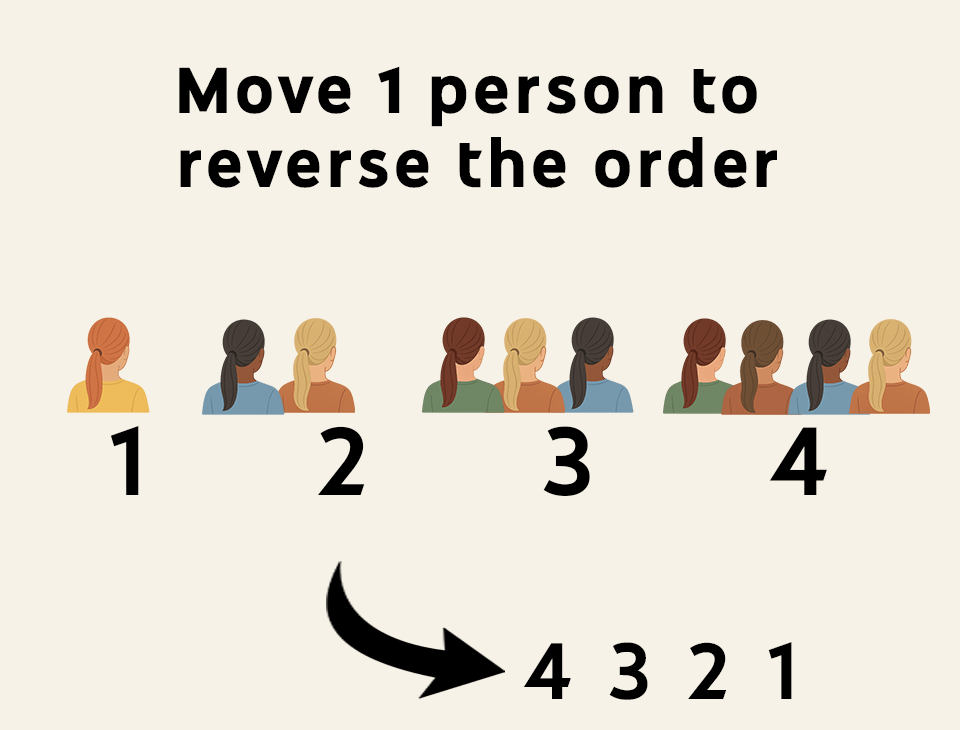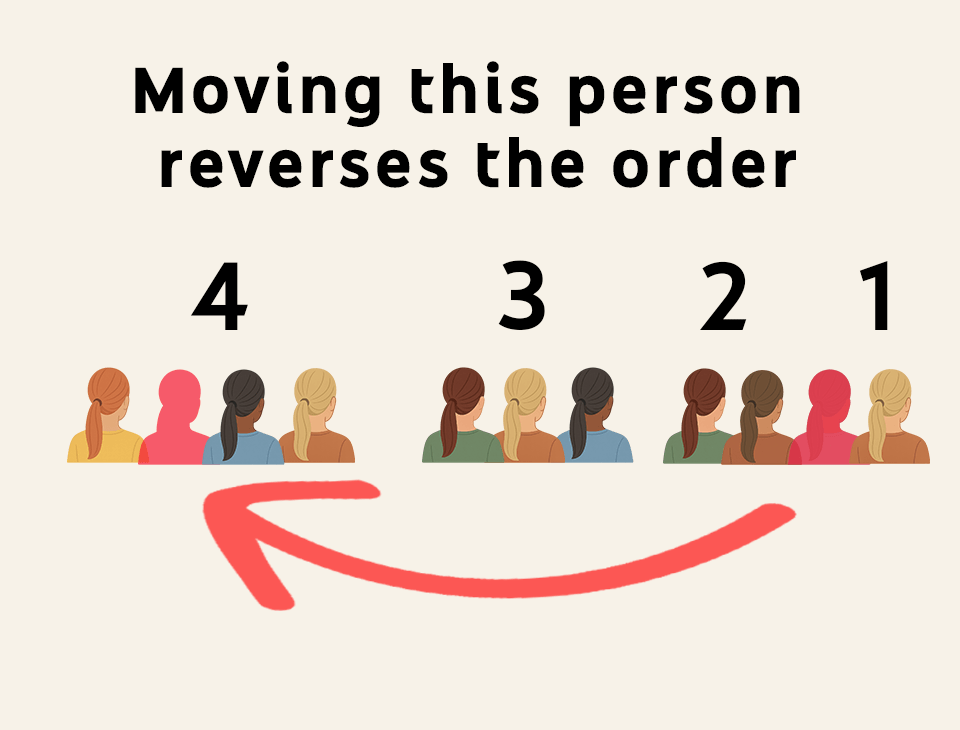A NEW visual brainteaser from Laser Hair Removalo is doing the rounds, and it’s got nothing to do with split ends.
The image shows four groups of women lined up and labelled 1, 2, 3 and 4.
Your task is deceptively simple: move just one person so the order becomes 4, 3, 2, 1.
No swapping whole groups. No sneaky double moves. Just one person. That’s it.
If your brain’s already whirring, you’re not alone. This one looks easy on first glance, then gets trickier the longer you stare.
The brand calls it a test of “50/50 vision” – the knack for seeing the big picture and the tiny detail at the same time.
In other words, you need to clock what each group is doing on its own and how they all work together.
Set a 15-second timer and have a go. Done? Now try to do it faster.
It’s a brilliant little reset for the brain and exactly the kind of puzzle that loves to get shared in group chats.
So what makes it so fiddly? It nudges you to think about movement in terms of impact, not effort.
If you’re busy mentally shuffling whole clusters around, you’ll miss the tiny tweak that flips the entire sequence. That’s the trap. The smartest move is the smallest one.
Why optical puzzles are having a moment
We’re seeing a wave of visual teasers go viral because they scratch the same itch as word games and daily quizzes – quick, snackable challenges that make you feel sharper in minutes.
They’re shareable, competitive and weirdly soothing once you lock in and focus.
Plus, the best ones, like this, hide the answer in plain sight.
It’s not about encyclopaedic knowledge or hours of effort.
It’s about staying calm, scanning smartly and backing your instincts.
That little jolt of “aha!” is seriously addictive.
Timca Pruijt, founder of Laser Hair Removalo, said: “Puzzles like this are a playful reminder that the smartest move is often the smallest one.”
If you’re still stuck, here’s a nudge without giving the game away: stop thinking about the labels and start thinking about how groups combine.
You’re not looking for a fancy rearrangement. You’re looking for a single person who, when moved, changes the balance so the front of the line becomes the biggest group and everything else clicks into place behind it.
A few quick tips before you peek at the solution: “If you can keep calm, scan the scene, and spot the single switch that flips everything, you’ll breeze through it.
“This one feels impossible until it suddenly… doesn’t. When you see it, you can’t unsee it. If you crack it in under 15 seconds, you’ve got exceptional pattern-recognition.”
A few quick tips before you peek at the solution:
- Don’t overcomplicate it. You only need to move one person.
- Look for a move that creates a new group of four without breaking the rules.
- Scan the gap between the first two groups. That’s where the leverage lives.
Think you’ve sussed it? Challenge a mate and see who gets there first.
Most of us need a minute or two before the penny drops, but once you spot the trick, it’s game over. You’ll never unsee it.
Solution (spoilers) Ready? Here’s the answer
Move one person from Group 4 and place her between Groups 1 and 2.
That single switch merges the first two groups into a brand-new group of four, neatly creating a front-of-the-line “4” without any extra shuffling.
What’s left behind is a 3, a 2 and a 1, in that order.
And just like that, you’ve flipped the sequence to 4, 3, 2, 1 with one tiny nudge.
It’s clever because it rewards lateral thinking. You’re not brute-forcing the order.
You’re using the smallest possible change to trigger the biggest possible result. That’s why it feels so satisfying when it clicks.
If you breezed through in under 15 seconds, consider your pattern-spotting muscles officially flexed.
If you didn’t, you’ve still trained your eyes and brain to work together – and that’s half the fun.
The more of these you try, the faster you’ll spot the “weak link” move in the next one.
Want to keep the challenge going? Time yourself, take a screenshot and send it to your group chat.
The winner buys the coffee. Or use it to break up your workday – a 30-second reset that leaves you feeling sharper than a double espresso.
However you play it, remember the golden rule: if it looks impossible, you’re probably overthinking it.
Zoom out, then zoom in. That’s “50/50 vision” in action.














